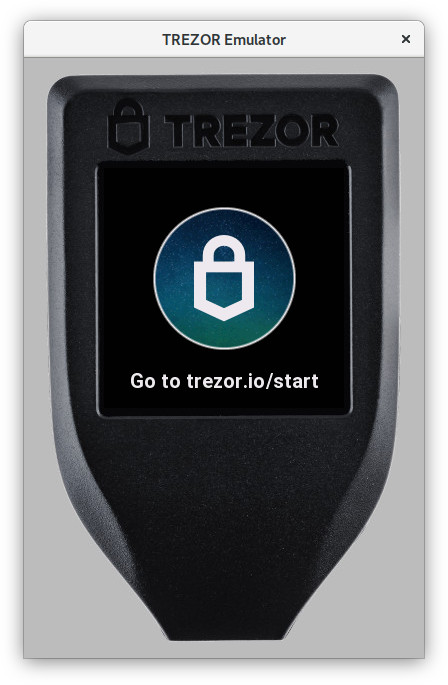3.1 KiB
Emulator
Emulator is a unix version of Core firmware that runs on your computer.
There is neither boardloader nor bootloader and no firmware uploads. Emulator runs the current code as is it is and if you want to run some specific firmware version you need to use git for that (simply checkout the right branch/tag). Actually, maybe we should call it simulator to be precise, because it does not emulate the device in its completeness, it just runs the firmware on your host.
Emulator significantly speeds up development and has several features to help you along the way.
How to run
- build the emulator
- run
emu.sh - to use bridge with the emulator support, start it with
trezord -e 21324
Now you can use the emulator the same way as you use the device, for example you can visit our Wallet (https://wallet.trezor.io), use our Python CLI tool (trezorctl) etc. Simply click to emulate screen touches.
Features
Debug mode
To allow debug link (to run tests), see exceptions and log output, run emulator with PYOPT=0 ./emu.sh. To properly distinguish the debug mode from production there is a tiny red square in the top right corner. The debug mode is obviously disabled on production firmwares.
Initialize with mnemonic words
If the debug mode is enabled, you can load the device with any recovery seed directly from the console. This feature is otherwise disabled. To enter seed use trezorctl:
trezorctl -m "your mnemonic words"
or to use the "all all all" seed defined in SLIP-14:
trezorctl -s
Shamir Backup is also supported:
trezorctl -m "share 1 words" -m "share 2 words"
Storage and Profiles
Internal Trezor's storage is emulated and stored in the /var/tmp/trezor.flash file on default. Deleting this file is similar to calling wipe device. You can also find /var/tmp/trezor.sdcard for SD card and /var/tmp/trezor.log, which contains the communication log, the same as is in the emulator's stdout.
To run emulator with different files set the environment variable TREZOR_PROFILE like so:
TREZOR_PROFILE=foobar ./emu.sh
This will create a profile directory in your home ~/.trezoremu/foobar containing emulator run files. Alternatively you can set a full path like so:
TREZOR_PROFILE=/var/tmp/foobar ./emu.sh
Run in gdb
Running emu.sh with -d runs emulator inside gdb/lldb.
Watch for file changes
Running emu.sh with -r watches for file changes and reloads the emulator if any occur. Note that this does not do rebuild, i.e. this works for MicroPython code (which is interpreted) but if you make C changes, you need to rebuild your self.
Print screen
Press p on your keyboard to capture emulator's screen. You will find a png screenshot in the src directory.
Auto print screen
If TREZOR_SAVE_SCREEN=1 is set, the emulator makes print screen on every screen change.

